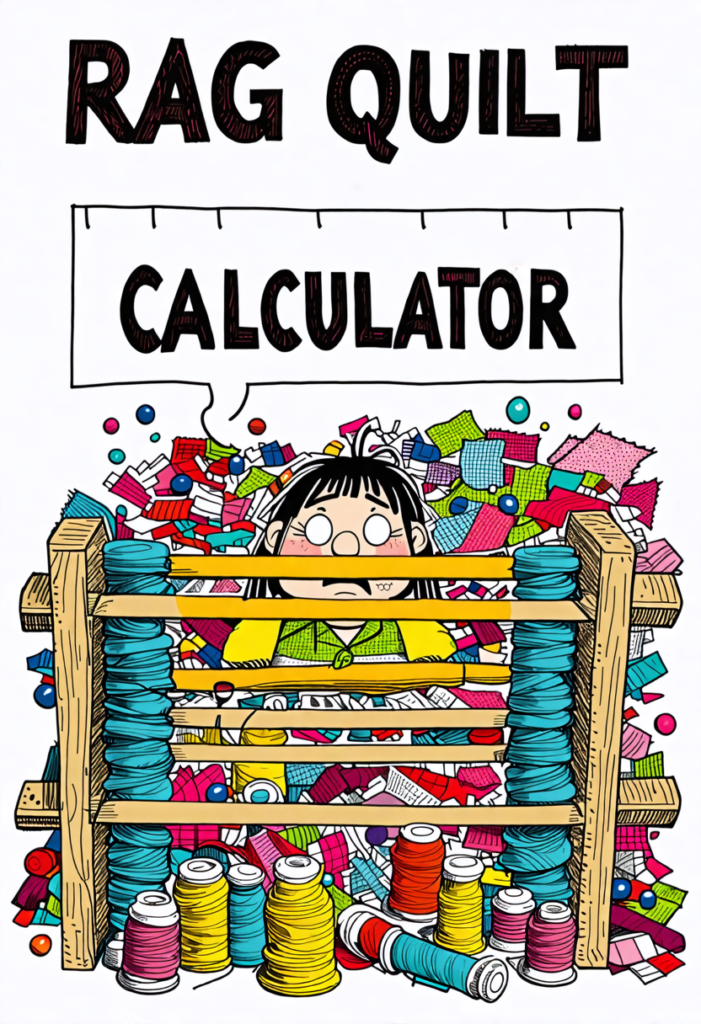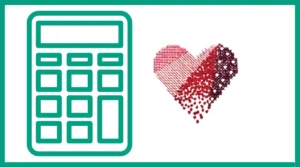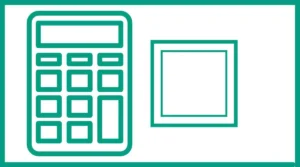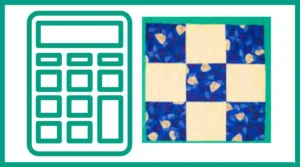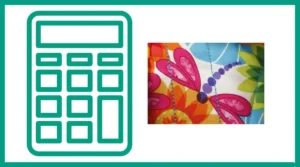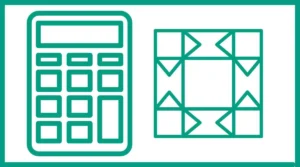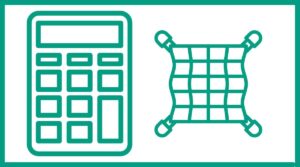Rag Quilt Calculator
the Basics of Rag Quilts
Unlike traditional quilts, rag quilts are constructed with exposed seams that are designed to fray, creating a soft, fluffy appearance. This technique not only adds texture but also provides a comforting, lived-in feel to the finished product.
Rag quilts are typically made up of square fabric pieces, often in various patterns and colors. These squares are arranged in a grid pattern, with each square consisting of three layers: a top fabric, batting (optional), and backing fabric. The exposed seams are created by sewing these squares together with the seam allowances facing outward.
The Importance of Precise Calculations in Rag Quilting
- Material Efficiency: Knowing exactly how much fabric you need helps prevent waste and unnecessary expenses.
- Time Management: Proper planning allows you to estimate the time required for cutting and assembling your quilt.
- Design Accuracy: Precise measurements ensure your finished quilt matches your intended size and pattern.
- Consistent Results: Accurate calculations lead to evenly sized squares and a professional-looking final product.
the Rag Quilt Calculator
The Rag Quilt Calculator is a user-friendly online tool designed to streamline the planning process for rag quilt projects. By inputting a few key measurements and preferences, you can quickly determine the exact amount of fabric needed, the number of squares to cut, and other crucial details for your project.
Key Features
- Square Size Calculation: Determine the optimal size for your fabric squares based on your desired finished quilt size.
- Fabric Quantity Estimation: Calculate the total amount of fabric required for your project, including backing material.
- Layout Planning: Visualize the number of squares needed for each row and column in your quilt design.
- Multi-Fabric Support: Plan projects using multiple fabric types or patterns with ease.
- Customization Options: Adjust parameters such as seam allowance and fringe size to suit your preferences.
How to Use the Rag Quilt Calculator
Using the Rag Quilt Calculator is straightforward and intuitive. Follow these steps to get the most out of this powerful tool:
- Input Square Size: Enter the desired size of your fabric squares in inches. This measurement includes the seam allowance.
- Specify Fabric Count: Indicate the number of different fabrics you plan to use in your quilt. This helps in evenly distributing patterns and colors.
- Set Quilt Dimensions: Enter your desired finished quilt width and height in inches. The calculator will use these measurements to determine the number of squares needed.
- Enter Fabric Width: Specify the width of your fabric in inches. This is typically 42-44 inches for quilting cotton, but may vary depending on your chosen material.
- Calculate: Click the “Calculate Rag Quilt Fabric Requirements” button to generate your results.
- Review Results: The calculator will provide a detailed breakdown of your project requirements, including:
- Squares per row
- Number of rows
- Total squares needed (including backing)
- Squares per fabric type
- Fabric strips needed per fabric
- Fabric length needed per fabric (in inches)
Interpreting the Results
Understanding the calculator’s output is key to successfully planning your rag quilt project. Let’s break down each element of the results:
- Squares per Row: This tells you how many squares will fit horizontally across your quilt.
- Number of Rows: This indicates how many rows of squares your quilt will have vertically.
- Total Squares: This number includes both the front and back squares, giving you the total number of squares you’ll need to cut.
- Squares per Fabric: If you’re using multiple fabrics, this shows how many squares to cut from each fabric type.
- Fabric Strips Needed: This indicates how many strips of fabric you’ll need to cut to achieve the required number of squares.
- Fabric Length Needed: This measurement tells you how much yardage you’ll need for each fabric type.
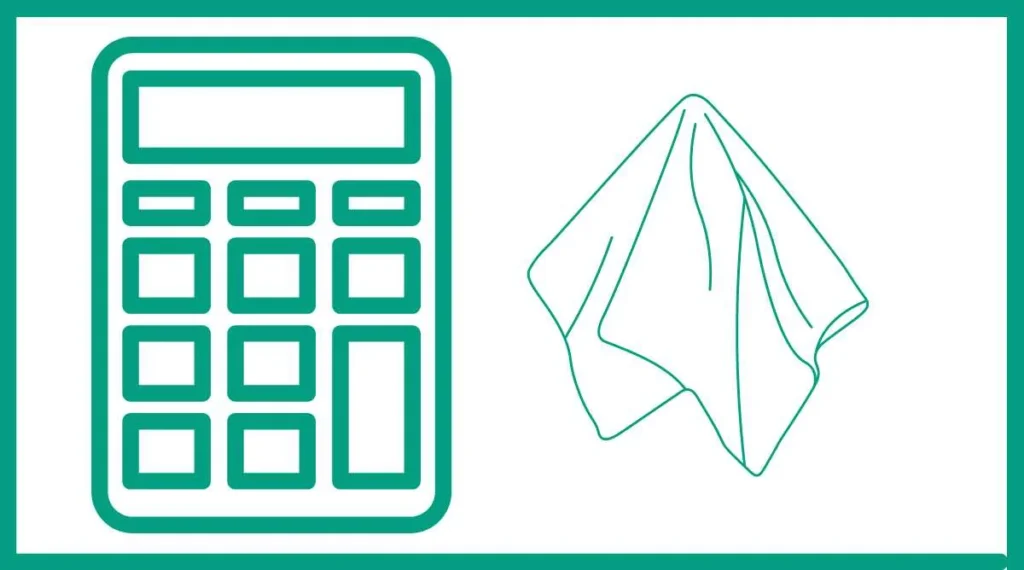
Practical Examples
To illustrate how the Rag Quilt Calculator works in practice, let’s explore two examples:
Example 1: A Cozy Lap Quilt
Suppose you want to create a lap quilt with the following parameters:
- Square size: 6 inches
- Number of fabrics: 3
- Desired quilt size: 36 inches x 48 inches
- Fabric width: 42 inches
After inputting these values into the calculator, you might receive the following results:
- Squares per row: 7
- Number of rows: 9
- Total squares (including back): 126
- Squares per fabric: 42
- Fabric strips needed per fabric: 6
- Fabric length needed per fabric: 36 inches (1 yard)
This output tells you that you’ll need to cut 42 squares from each of your three fabric choices, and you’ll need 1 yard of each fabric to complete your lap quilt.
Example 2: A Queen-Size Bedroom Quilt
For a larger project, let’s consider a queen-size quilt:
- Square size: 8 inches
- Number of fabrics: 5
- Desired quilt size: 90 inches x 100 inches
- Fabric width: 44 inches
The calculator might provide these results:
- Squares per row: 13
- Number of rows: 14
- Total squares (including back): 364
- Squares per fabric: 73
- Fabric strips needed per fabric: 14
- Fabric length needed per fabric: 112 inches (3.11 yards)
In this case, you’d need to cut 73 squares from each of your five fabric choices, requiring about 3.25 yards of each fabric to complete your queen-size quilt.
Tips
To get the most out of the Rag Quilt Calculator, consider the following tips:
- Fabric Shrinkage: Factor in potential fabric shrinkage when inputting your desired quilt size. It’s often wise to add an extra inch or two to compensate.
- Seam Allowance: Remember that the calculator assumes a 1/2 inch seam allowance. If you prefer a different allowance, adjust your square size accordingly.
- Rounding Up: When purchasing fabric, always round up to the nearest quarter yard to ensure you have enough material.
- Pattern Matching: If you’re using patterned fabrics that require matching, consider adding extra yardage to your calculations.
- Test Calculations: Before cutting into your fabric, do a small-scale test with scrap materials to verify the calculator’s accuracy for your specific project.
Troubleshooting Common Issues
While the Rag Quilt Calculator is designed to be user-friendly, you might encounter some challenges. Here are solutions to common issues:
- Unexpected Results: Double-check all input values for accuracy. Even a small error can significantly affect the output.
- Fractional Squares: If the calculator suggests a fractional number of squares, round up to the nearest whole number to ensure full coverage.
- Fabric Shortages: If you find yourself short on fabric, consider incorporating solid-colored squares or complementary patterns to fill the gap.
- Oversized Quilts: For very large quilts, consider breaking the project into smaller sections and calculating each separately.
